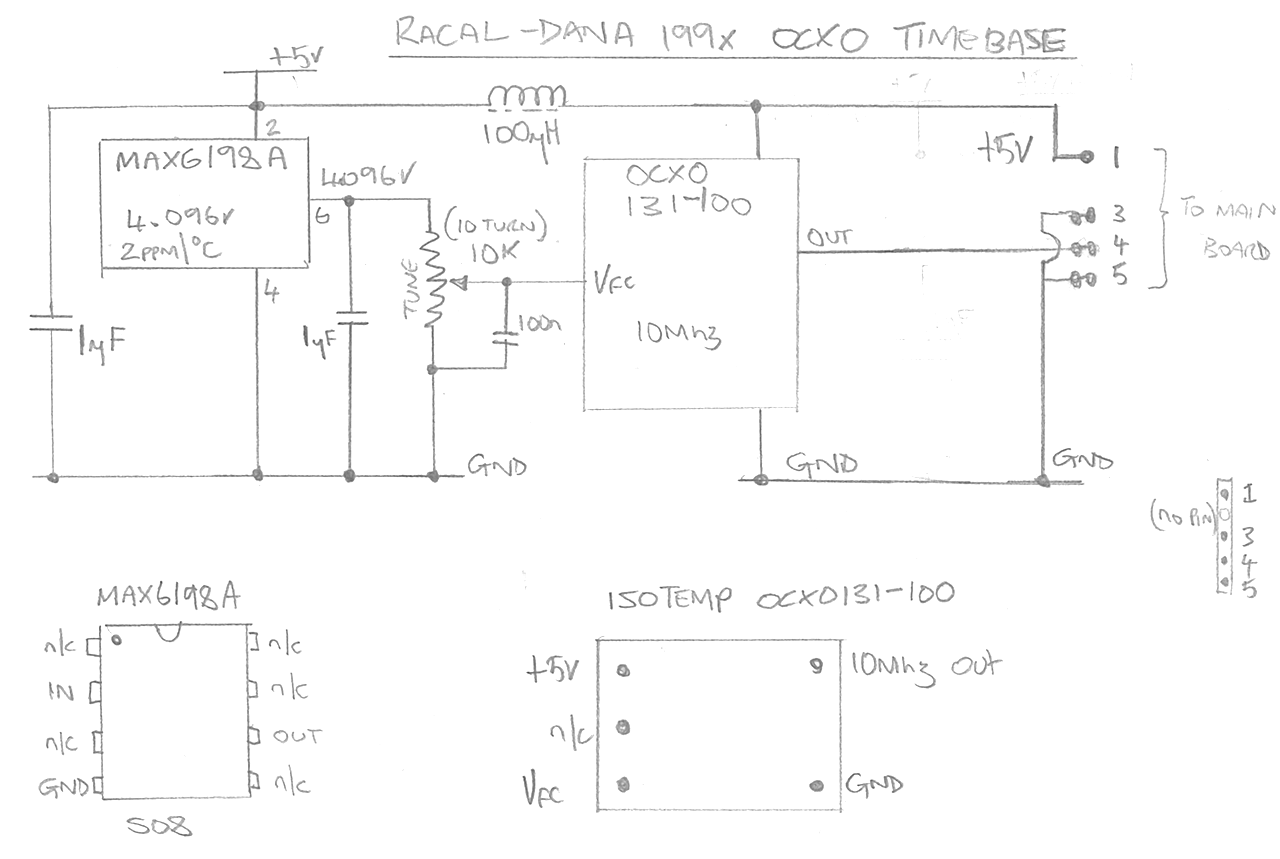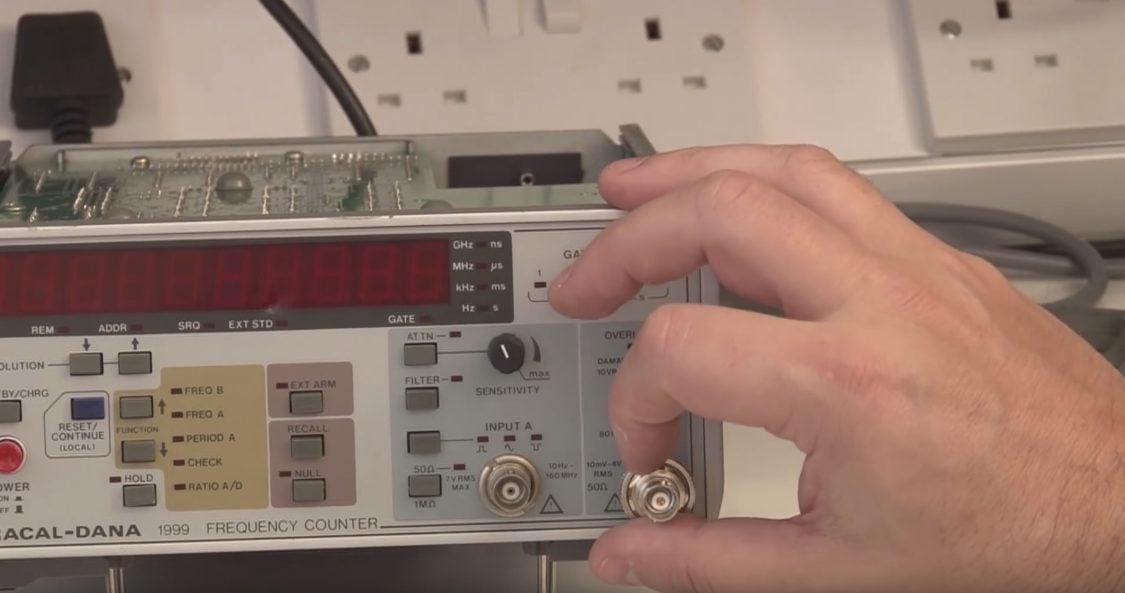Having played with a number of OCXO’s and a Rubidium standard I tried (after repairing it) to calibrate the standard timebase in my Racal-Dana 1999 counter which is actually a simple TCXO. I could get pretty close but it was touchy and not easy to be totally precise. In response to that vlog article a number of people suggested it would be nice to do an OCXO modification to the Racal counter so I decided to do exactly that, and I done it on a budget too…
One of the problems with this counter is the lack of any 12v supply that is able to provide enough current to drive the OCXO’s oven, so I had a look around and found an OCXO made by Isotemp model OCXO131-100 that runs on 5V which is perfect for this build because the counter has a good 5v supply that can easily drive the additional current required – I have provided a download link for the data sheet for the OCXO I used below below. I ordered one from a seller on e-bay and used that as the basis for the hack.
The other key component needed to implement a stable OCXO board for this counter is a “temperature stable” variable voltage between about 1 and 4 volts, this is used to fine tune the OCXO to allow the oscillator to be calibrated. To get me a suitable reference voltage I have used a MAX6198A, chosen simply because I had some to hand – but also because they have pretty darn good temperature stability too.
Schematic
Here is the schematic I used to create the OCXO board.
Other Information
* The SMD Adaptors I used can be got from here: SMD Adapters – Set #1/
